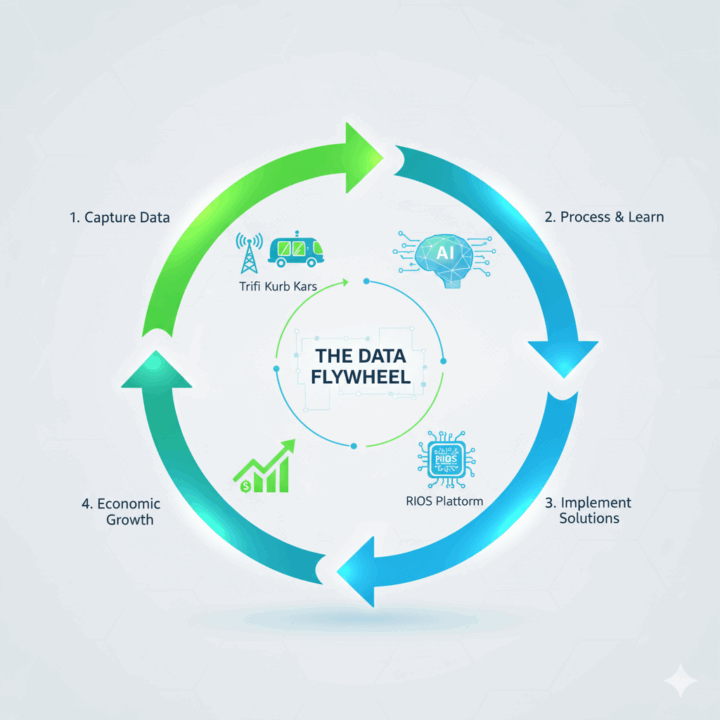
Strategic Change: MOU as a Commercial Validation Engine
The $30 Million Memorandum of Understanding (MOU) with Uganda represents a fundamental and high-impact change in the project’s strategic posture, transitioning it from a research-stage concept to a commercially validated technology deployment program. This is particularly relevant for securing highly competitive federal research grants like the Small Business Innovation Research (SBIR) and Small Business Technology Transfer (STTR) programs.
1. The SBIR Commercialization Mandate
The SBIR/STTR programs, collectively known as “America’s Seed Fund,” encourage U.S. small businesses to engage in high-risk research and development (R&D) that has a high potential for commercialization and public benefit[1].
- Phase I Focus: Establish the technical merit and commercial potential of an idea[2].
- MOU’s Role: A key component of the SBIR proposal is detailing the commercial potential, including the target market, value proposition, and financing strategy beyond the SBIR award[3]. The Uganda MOU acts as a non-dilutive Phase III follow-on commitment and a firm Letter of Commitment/Support from a credible entity (the Ugandan government/Agra Energy)[3].
2. Significance of the $30 Million MOU
The $30 million commitment is not merely a letter of intent; it is proof of a secured, multi-million dollar commercial pathway for the technologies being developed:
- De-Risking the Technology: Federal agencies often view R&D for developing world applications as having limited domestic commercial potential. The MOU, valued at a substantial sum, provides concrete evidence of an immediate, large-scale, international customer base, de-risking the innovation in the eyes of the government reviewer.
- Validation of Phase III: SBIR Phase III requires the technology to transition to the commercial market without federal funding[1]. The MOU explicitly covers the integration of all technologies—plasma conversion, RIOS, Kurb Kars logistics, and microgrid DSM—demonstrating a clear and funded path to Phase III success, a critical metric for a Phase I award[3].
In short, the MOU transforms the A-E-U-D technologies from “promising R&D concepts” into “commercially validated and funded deployment components.”
Specific SBIR/STTR Opportunities (Deadline: Next 30 Days)
Based on current solicitation schedules (noting that exact deadlines vary and must be verified on the agency website, particularly around government fiscal year and quarterly releases), the following opportunities align directly with the A-E-U-D ecosystem and present the most immediate funding window.
Note: All applicants must be a U.S. small business concern, and a majority of the R&D work must be performed in the U.S.[4].
1. U.S. Department of Energy (DOE) – Office of Energy Efficiency & Renewable Energy (EERE)
The DOE’s EERE offers SBIR/STTR funding with a strong focus on clean energy, microgrids, and industrial decarbonization. The plasma gasification and STE system provides excellent alignment.
| Opportunity Focus Area | Project Alignment (A-E-U-D Component) | Potential SBIR/STTR Topic Alignment | Phase I Award (Example) |
| Microgrids and Resilient Power | Development and validation of the DeReticular RIOS Demand-Side Management (DSM) AI logic for dynamic load shifting (fleet charging) and power quality stabilization with minimal BESS[5][6]. | Technologies Enabling Solar-Powered DC Microgrids; Cybersecurity of Solar Energy Systems[5]. | Up to $200,000$200,000[5] |
| Industrial Decarbonization & Bioenergy | Optimization and control of the plasma torch system to achieve maximum syngas yield from mixed solid waste (MSW) or biomass feedstocks[7]. | Bioenergy Feedstock Logistics Improvements; Energy Efficient Aqueous Separation Technologies (Syngas cleanup)[7]. | Up to $200,000$200,000[5] |
2. U.S. Department of Agriculture (USDA) – NIFA SBIR/STTR
The USDA program encourages projects dealing with agriculturally-related manufacturing and alternative/renewable energy technologies, which directly applies to the use of waste feedstock[8].
| Opportunity Focus Area | Project Alignment (A-E-U-D Component) | Potential SBIR/STTR Topic Alignment | Phase I Award (Example) |
| Bioenergy and Natural Resources | R&D on the use of locally sourced Ugandan biomass/waste as a co-feedstock for the plasma gasification system to maximize energy output and reduce reliance on MSW variability. | Alternative and Renewable Energy Technologies; Technology that enables rural communities to better utilize their resources[8]. | Varies by RFA |
3. National Science Foundation (NSF) – America’s Seed Fund
NSF SBIR awards focus on commercializing high-risk, high-reward, innovative technologies in a broad range of areas, including AI and Robotics.
| Opportunity Focus Area | Project Alignment (A-E-U-D Component) | Potential SBIR/STTR Topic Alignment | Phase I Award (Example) |
| Robotics and Autonomous Systems | Development of the DeReticular RIOS autonomous mission control stack (leveraging FSD V15 data) for resilient logistics in challenging, unmapped environments (Uganda). | Cyber-Physical Systems; Robotics and Autonomous Systems[9]. | ∼$275,000∼$275,000[1] |
Call to Action (Next 30 Days)
- Grant Pipeline Prioritization: Immediately select 2-3 of the most relevant Phase I opportunities (likely DOE EERE or USDA, given the deadlines) for the next 30-day submission window.
- MOU Integration: The
$30 Million MOU$30 Million MOUmust be explicitly referenced, attached as an Optional Letter of Support/Commitment[3], and woven into the Commercialization Plan section of every proposal. - TABA Program: Apply for the Technical and Business Assistance (TABA) program available through DOE, which provides additional funding for commercialization activities such as market validation and the development of regulatory plans—specifically useful for navigating the Uganda regulatory landscape[5][6].
Sourceshelp
